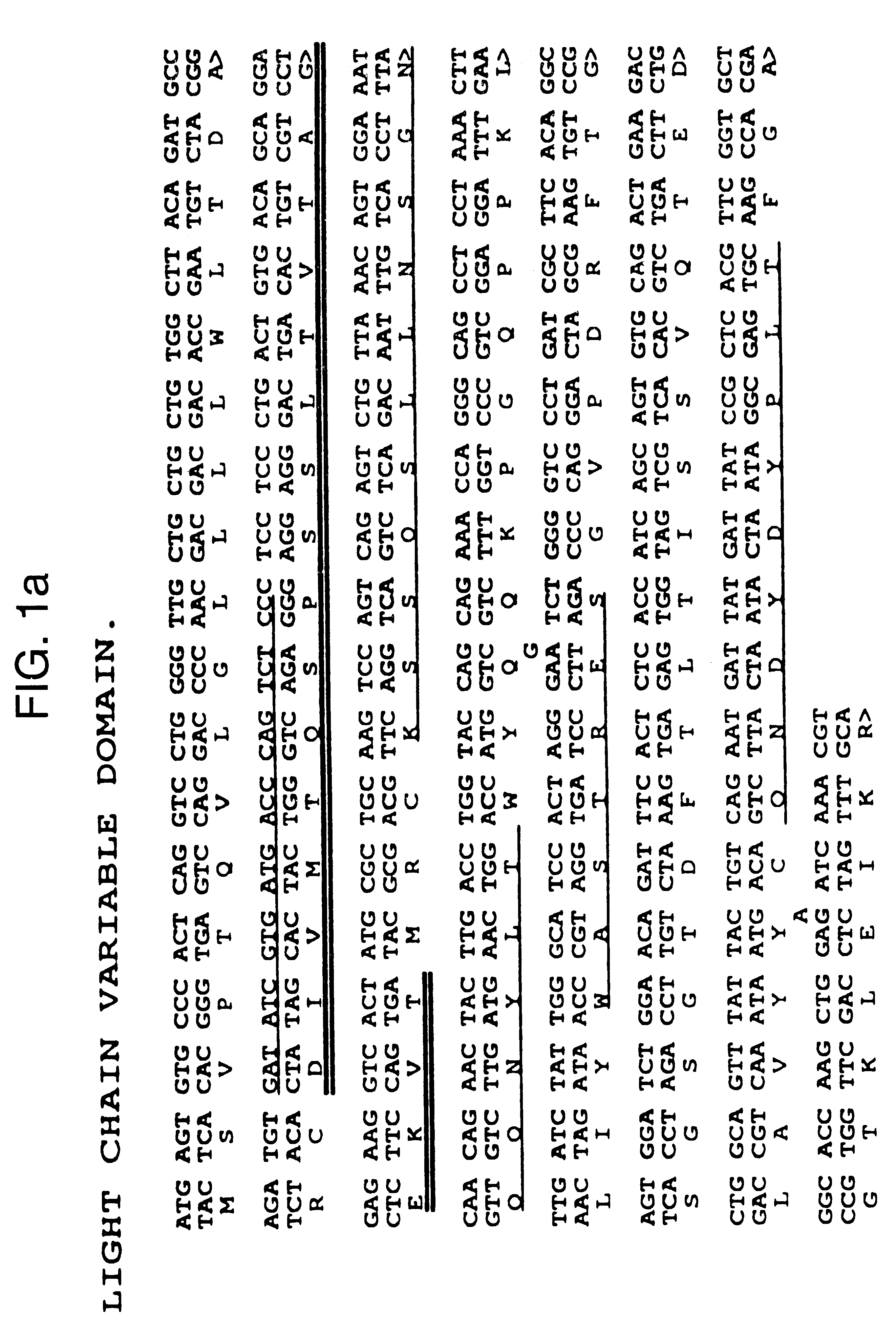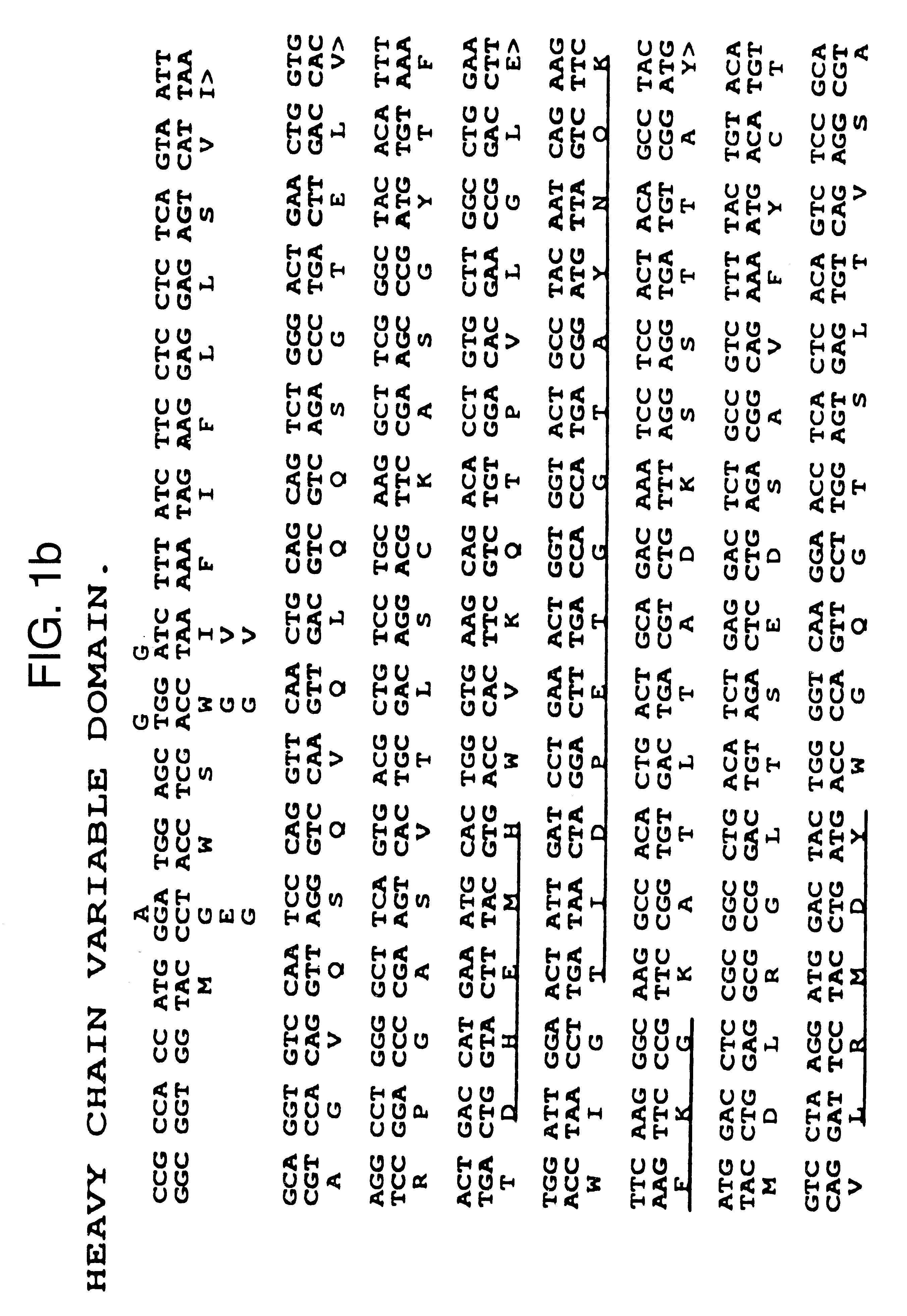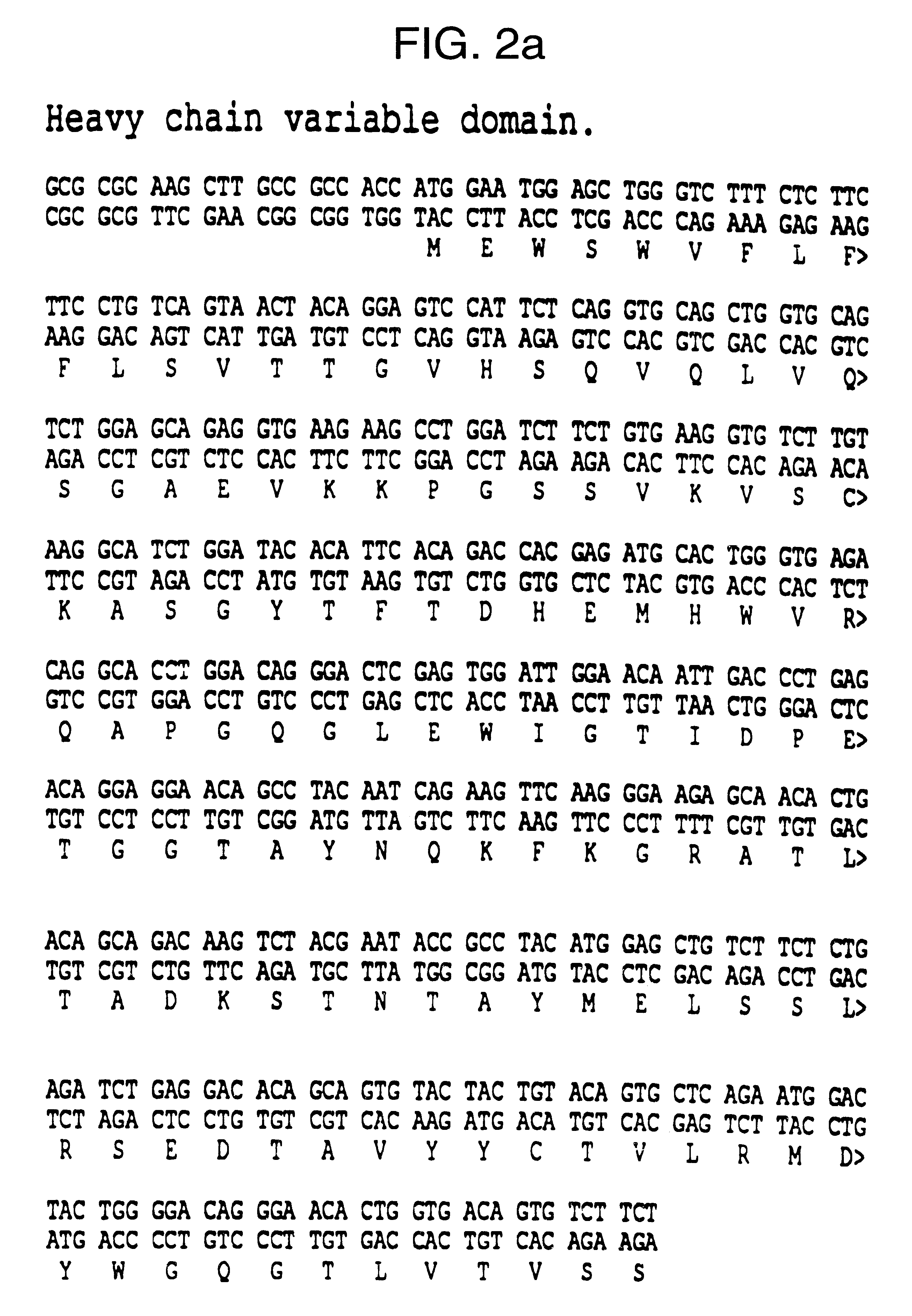Antibodies against E-selectin
a technology of e-selectin and antibodies, applied in the field of antibodies against e-selectin, can solve the problems of reducing the effectiveness causing the rise of an undesirable immune response termed hama, and inherently limited human use of rodent monoclonal antibodies as therapeutic agents
- Summary
- Abstract
- Description
- Claims
- Application Information
AI Technical Summary
Benefits of technology
Problems solved by technology
Method used
Image
Examples
example 1
Production of mouse ENA-2 and ENA-2F(ab')2
The hybridoma producing mouse ENA-2 was grown in DMEM medium containing 10% foetal calf serum. Antibody was purified from cell supernatants by affinity chromatography on Protein A-SEPHAROSE. This material was used to prepare F(ab')2 fragments by digestion with bromelain followed by Protein A- chromatography to remove the Fc portion and undigested antibody followed by DEAE ion-exchange chromatography to remove the protease.
The first 19 amino acid residues of the ENA-2 light chain were determined by N-terminal protein sequencing.
Cloning mENA-2 Variable Domain Genes and Construction of Chimeric Antibodies
The heavy and light chain variable domains of ENA-2 were cloned using the polymerase chain reaction (PCR). The primers used for the heavy chain were the same as described by Jones and Bendig (1991) (Bio Technology 9 88-89) with minor modifications to enable fragments to be cloned directly into Celltech expression vectors. PCR reactions were car...
example 2
We have investigated the effects of ENA-2 F(ab)'.sub.2 and the fully engineered human variant. hENA-2 (L235A), in cytokine induced inflammation in baboons.
Intradermal injections of recombinant human IL-1 .alpha. (rhlL-1), 0.1 and 1.0 .mu.g / site, and recombinant human TNF .alpha. (rhTNF), 5 .mu.g / site, were made in adult baboons. Injections were made, to a pre-determined random grid pattern, at 2, 4 or 8 hours prior to taking full thickness skin biopsies with an 8 mm diameter skin biopsy punch. Each mediator was given as a 0.1 ml injection in triplicate sites at two time points. Light general anaesthesia was used for the biopsies. The tissues were processed for either formalin fixed paraffin wax histology with haematoxylin and eosin staining or chilled to -70.degree. C. for cryostat sectioning and immunohistochemical analysis. Blood samples were taken to determine if the treatment had any effect on circulating blood cells and for antibody pharmacodynamic analysis. Control animals rec...
example 3
The engineered human anti-E-selectin antibody, the production of which is described in Example 1 (ie hENA-2,L235A,S228P .gamma.4 isotype) recognises human E-selectin and, under appropriate conditions, prevents PMN adhesion to activated endothelial cells. In order to confirm that the antibody could inhibit the migration of leukocytes into human skin in an in vivo setting a model using human skin grafted onto SCID mice has been utilised. This model was first reported by Yan et al (J. Clin Invest. 91 986-996 (1993)) and has subsequently been used to show that a murine anti-human E-selectin antibody can inhibit leukocyte trafficking Yan et al (J. Immunol 1 5 2 3053 (1994)). In this model mouse leukocytes (predominantly PMN) migrate into the human skin via human endothelial cells in response to injected cytokine.
Method
After anaesthesia, 6-8 week old SCID mice (purchased from Wistar Institute) were prepared for transplantation by shaving the hair from a 5 cm.sup.2 area on each side of the...
PUM
| Property | Measurement | Unit |
|---|---|---|
| diameter | aaaaa | aaaaa |
| time | aaaaa | aaaaa |
| area | aaaaa | aaaaa |
Abstract
Description
Claims
Application Information
 Login to View More
Login to View More - R&D
- Intellectual Property
- Life Sciences
- Materials
- Tech Scout
- Unparalleled Data Quality
- Higher Quality Content
- 60% Fewer Hallucinations
Browse by: Latest US Patents, China's latest patents, Technical Efficacy Thesaurus, Application Domain, Technology Topic, Popular Technical Reports.
© 2025 PatSnap. All rights reserved.Legal|Privacy policy|Modern Slavery Act Transparency Statement|Sitemap|About US| Contact US: help@patsnap.com



